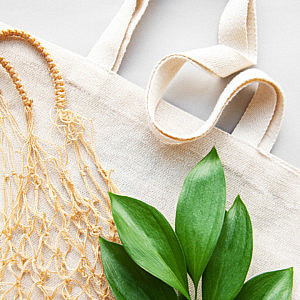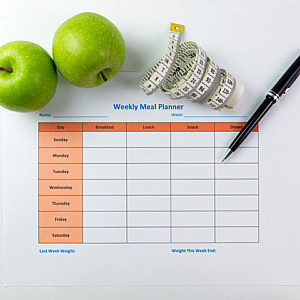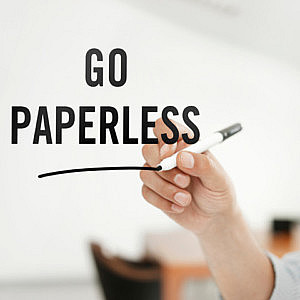What does organising your home sustainably actually mean? Seven steps to get you started...
What does organising your home sustainably actually mean?
Jacqueline McLeod (Bancrofts Organisation Services), APDO Communications & Marketing Director, aka clutter_free_queen, gives seven steps to get you started...If you regularly declutter and organise your home you are already well on your way to practising sustainability in your home.
But what does that actually look like? What actions really sit behind ‘going-green’ in the place where many of us now spend so much of our time?

If decluttering your home is not a habit then do your best to make it one. A good rule of thumb is to do a purge every quarter or at the start of a new season. Try to think about the outcome you want and the objectives of clearing any clutter and sorting out your space. This is a good way to motivate yourself and keep you focused on your goal. Doing your part to look after the planet is a great objective to have.
Develop a clutter-free green mindset. Always ask yourself before you buy something - Do I really need it? Is it doing more harm to the environment? Is it recyclable? What can I donate, swap or upcycle instead? Can I give something else away before acquiring this?
Create four piles as you declutter and sort - Donate, Recycle, Sell and Keep.
Remember creating and organising a home that flows, functions and feels good can only be really achieved if you love what is it and know it serves a positive purpose.
#1 Decide what you can donate or sell

There are many charities that you can donate an array of items to now including clothes, books, furniture and electrical items. Do your research to ensure the charity is fully registered and will accept your items. Then take them to the chosen charity shop or have them ready for collection within a day or two, no longer, so they don’t just become clutter that has moved from one room to another. Use reputable online market places to sell any unwanted items and put them online within a day or two and if they don’t sell within a month, donate them.
#2 What can you recycle or upcycle?
As you go through the things in your home remember that there are many glass, plastic, paper, aluminium, metal, wood, textiles items that can be recycled. Remember to check which plastic items can’t be recycled such as some screw top lids.
Here are some items that you can’t recycle - items that have been contaminated with food bits, coloured paper, wire hangers, polystyrene and clingfilm.
Take recycling to a whole new level and make sure everyone in your home knows the in’s and out’s of recycling by placing a list of what you can and can’t recycle wherever it usually takes place in your home.
You may well know by now how effective upcycling can be. It achieves so many good things. It reduces waste, saves money, breathes life into new pieces, generates creativity and can add great design to your home. If you haven't tried it then get out of your comfort zone and give it a go, safe in the knowledge that you are contributing in some way to looking after our planet.
#3 Don’t replace items that you have donated, sold or recycled.
Don’t be tempted to fill the space you have created with new items. Now you have more space optimise it by learning new sorting strategies. For example, if you have decluttered your wardrobe you may have the urge to fill the empty spaces. Don't. Instead take advantage of the found space and organise your clothing and accessories better by spacing them out like a boutique does or invest in sustainable containers and go to town on allocating areas for each type of accessory or category of clothing.
#4 Try planning your meals for the week in advance

Reduce waste by planning the meals you will eat for the week and buy the right amount of food to avoid excess. Try cutting down on meat too, to help lighten your carbon footprint. Set up a weekly meal planner and complete it every Sunday.
#5 Invest in good quality sustainable storage.
There are lots of well-designed, good quality eco-friendly storage options that can serve your needs. Opting for bamboo, wood, linen, and wicker is a good place to start. If you use long lasting plastic or glass containers, label them well with the name and expiration date you can easily refill them too and know when items are out of a date at a glance.
#6 Repurpose your items.
It's so important for us to be continuously conscious about what we consume and what we throw away. It's easy to become complacent and stop thinking about the resources we use. Getting into a habit of repurposing items can take some time but it’s effective once you do.
Instead of throwing away the Chinese takeaway containers on a Friday night, why not use then them organise your drawers or bathroom cabinets? How about refiling an empty tissue box or using it to store napkins? One of my favourites is to reuse jam jars. They are THE perfect container for so many items such as pens, make up, cotton pads and making your own jam of course!
When it comes to reinventing the items in our homes, the possibilities are endless. It just requires a little creativity but with the internet at your fingertips or an APDO Professional Organiser just a few clicks away you don’t have to go far for some great suggestions.
#7 Go paperless.

There are so many benefits to going paperless including reducing your carbon footprint as your mail won't need to be shipped, flown or driven across the country or globe.
The less paper you have, the easier it is to be organised. Once you receive your mail digitally you can create a digital filing system that is far more efficient and secure. You can automate reminders off the back of your system and subsequent actions.
It's also much more convenient. It’s easier to access and harder to lose important information; and let’s not forget that it can save you money as many companies you pay your bills to reward you for going paperless.
I hope you can see the real value in setting up and organising your home in a sustainable way and I hope my seven tips encourage to get started or to do even more! Once you develop the habit and put lots of mini-systems in place around your home, you will begin to realise the difference you can make.
Article by Jacqueline McLeod of Bancrofts Organisation ServicesInstagram: clutter_free_queen
#NOW2021 #sustainableliving #clutterfreequeen #APDO
Your local organisers from APDO are here to help. Find help in your area on our Find an Organiser page.
